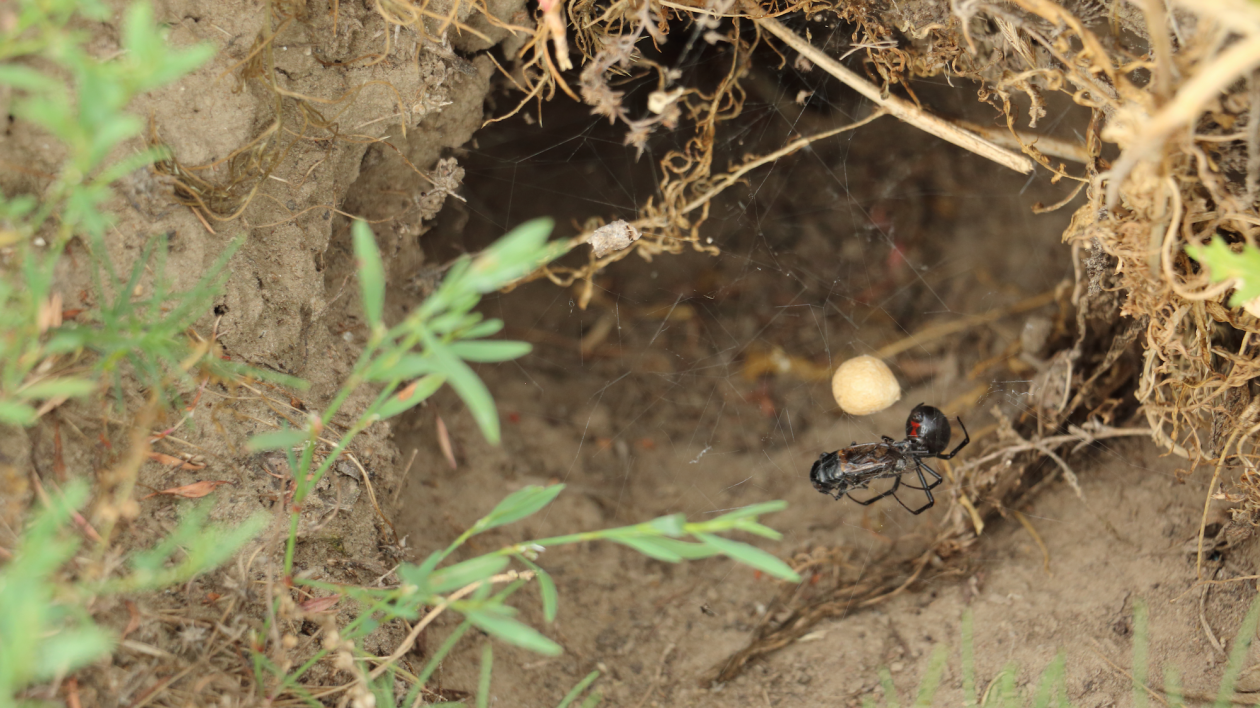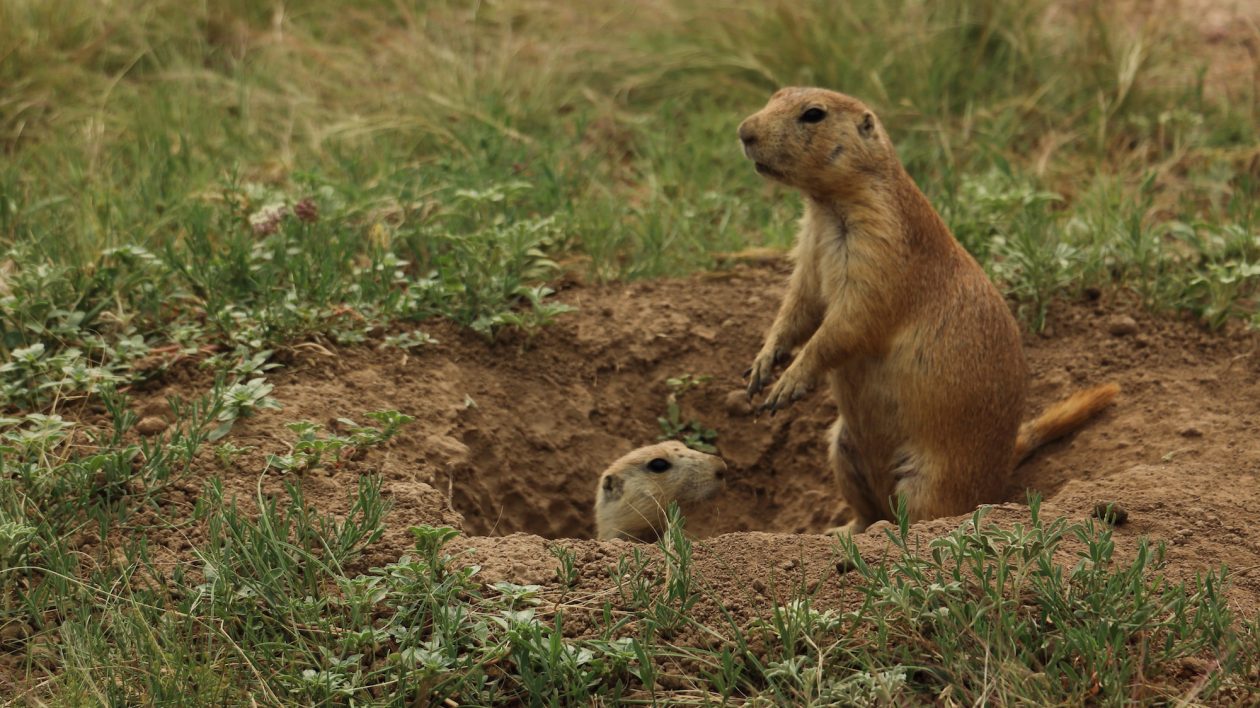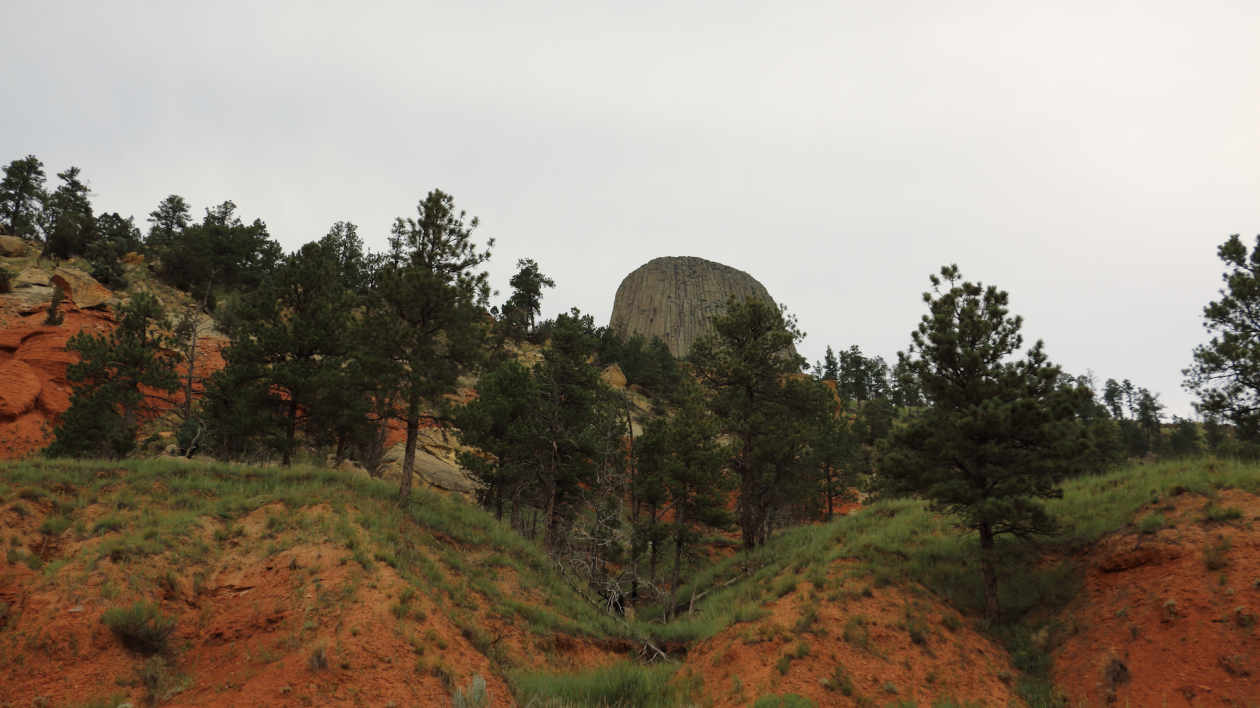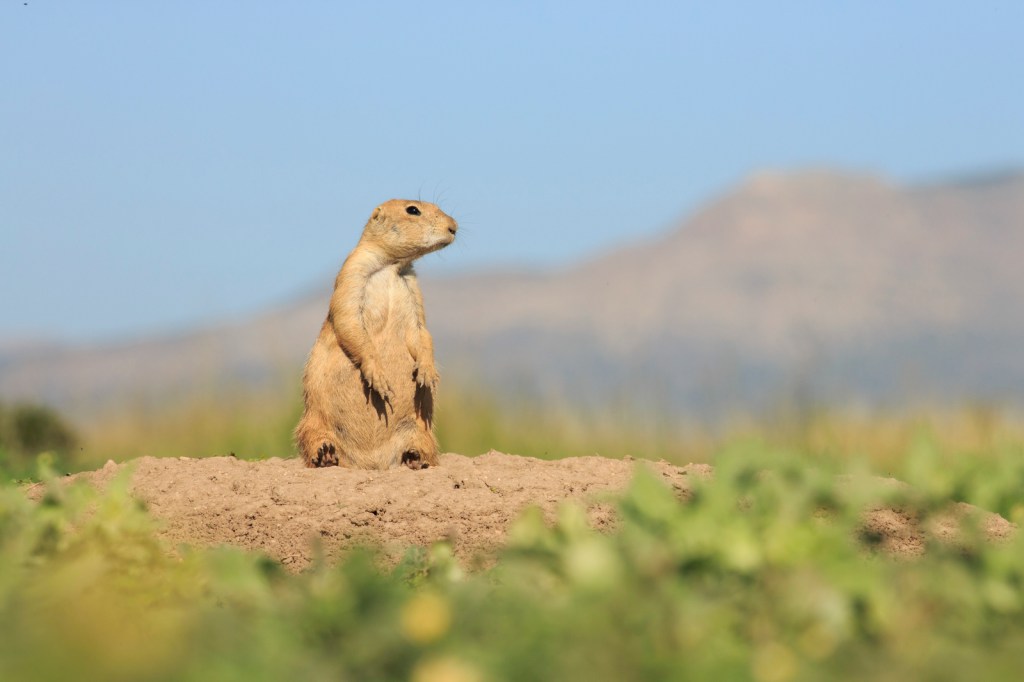It’s an incessant chirp. High and sharp with a no-mess-around meaning. It’s a black-tailed prairie dog at Devils Tower National Monument in Wyoming. The chirp is an alarm, but my clues are more visible than audible. There’s a tourist a few yards away from me. A dad. His incessant “no”, similar to the chirp, is another alarm. The two calls sync. No. Chirp. No. Chirp. No. Chirp. Dad’s son is moving farther from no and closer to chirp. The pull of wild romp stronger than domestic tether.
“Prairie dogs are watchable wildlife,” says Joe Bruce, Devils Tower National Monument education technician. “They’re active when visitation is at its peak and their town is right there along our main road. They’re fairly entertaining.”
So is watching the prairie dog, dad, son scenario while my own boys stare crouched by my side. Dad doesn’t want his son to trespass into the colony. The prairie dog doesn’t want that either. The colony already has plenty of trespassers. That’s why my boys and I are crouched by an abandoned burrow near the road. We know it’s abandoned because it’s covered in cobwebs. The constant in and out of a prairie dog would clear that.
Within the web, there’s an egg sack, a dead insect and a black widow. And there’s no doubt it’s a black widow. The red hourglass on its back confirms. The black widow has its babies and its breakfast in a burrow built by a prairie dog.

Prairie dog burrows are never used by just prairie dogs. A variety of wildlife will make use of the network. Some seek shelter. Others seek prairie dog dinners.
The black widow is a rare find according to prairie dog expert John Hoogland. He started studying prairie dog colonies, or towns, in 1974. He’s never seen a black widow in a burrow, but he’s seen just about everything else down there. Salamanders, box turtles, burrowing owls.
“Black widow doesn’t surprise me. It’s such a beautiful place for animals to be,” says John Hoogland, University of Maryland Center for Environmental Science professor of ecology. “Prairie dogs use different burrows for different reasons. Some for sleep. Some for raising young. Some are refurbished. Other animals use the less active burrows so I don’t think it’s a big deal for prairie dogs. They have a lot of other animals down in there with them.”
Prairie dog burrows can go down 15 feet into the earth and can extend as far as a football field. A prairie dog town is a vast network of connections underground and above. Hoogland often sees pronghorn and coyotes navigating the prairie neighborhood. Pronghorn are there to eat plants cultivated by dogs. Coyotes are there to eat dogs.

“Prairie dogs are a keystone species. You take away prairie dogs and all of a sudden you have predators that lose food and plants that lose prairie,” Hoogland says. “If prairie dogs weren’t a keystone species, I don’t think they would have a chance of surviving. They just wouldn’t make it.”
They’re barely making it as it is. Even at the base of Devils Tower, the nation’s first national monument where all are welcome, there’s a limit on how far the welcome extends to prairie dogs. The monument’s colony hosts about 500 prairie dogs and boundaries are clearly defined. The dogs don’t get to sprawl into the campground or amphitheater. There’s a shin-high gate, installed this year, and a trap beyond the gate just in case one of the varmints is motivated enough to shimmy over the short barrier.
“We only have space for a fairly small town. That’s why we have a management plan,” Bruce says. ”Other towns don’t need much management. They manage themselves.”

Or other people do. Prairie dog holes have long been blamed for breaking cattle ankles. That’s why ranchers don’t like them. Development doesn’t like uneven foundations so that’s another strike against a species that’s shrunk to less than five percent of its historic range in the last century.
“Over time, we’ve spent billions getting rid of prairie dogs,” Hoogland says. “If people knew something about them, they wouldn’t do that.”
Hoogland is a repository of prairie dog facts. The adults prey on pups in their own colony to improve the odds of their own litter surviving. He also knows females won’t mate with immediate family, but they will be the ones to sound that chirping alarm should a predator, or a curious child, enter their no trespass zone.
“Males almost never call,” Hoogland says. “Males are sort of like beer-drinking, couch-sitting, lazy studs.”
Female prairie dogs mate one day a year in March for about five hours. Some choose one “sole” mate. Others choose multiple mates in those few hours. Multiple maters have larger, stronger litters.
Hoogland, not one for couch sitting, is about to give sitting a try. After 45 years of fieldwork, he’s coming inside to spend two years on a book.
“I’ve learned a lot and I wish I could go another 45 years, but I don’t want to wait until I break my leg in a burrow,” he says. “Time for me to turn over my traps and binoculars to the next generation. I owe it to prairie dogs, to science and to me to put all I’ve learned in one place.”




Several years ago, I read an article about Prairie dogs and a prairie fires. An individual was studying the relationship of prairie dogs and Black footed ferrets (endangered at the time) and they had placed small cameras in several burrows. during the study a grass fire sweep through the site. An amazing sight was picked up by one of the cameras. as the fire swept over, a group of animals found refuge in one of the burrow “rooms” two to three feet below ground. The animals themselves were not unusual to be seen using the burrows….what was unusual was the make up of the group. Several were predator or prey and would not normally tolerated each other. It almost seemed as if they had “signed a peace treaty” at least until the fire was over. In the same burrow were, a salamander, a toad, a prairie dog a prairie rattle snake, a bull snake, a box turtle and several arthropods including beetles and a tarantula. As the fire retreated every one supposedly left the retreat to continue their individual pursuits. This story has always stuck with me….I am sorry I don’t have the source but I remember it appearing to being very legitimate at the time.